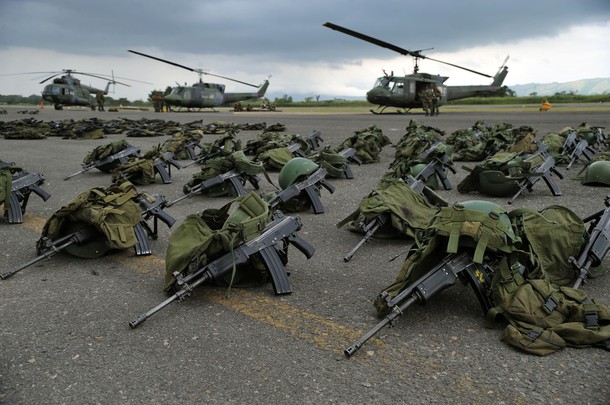
Given that the United States’ latest defense strategy was crafted earlier this year accounting for a nearly $490 billion defense cut over the next 10 years, if the Pentagon were to undertake a new strategic review, how might it go about accomplishing one, assuming the huge initial resistance against such an effort could be overcome?
First, in the shadow of this resistance and sequestration that, left unchecked by Congress cuts a further $500 billion from defense over the next decade, soon after the election, the Joint Chiefs of Staff and the four-star commanders should set aside ample time to examine the historical record of where and how U.S. military force worked; where it didn’t; and where and why it simply failed. The purpose is to understand with clarity the limits of military force as guidelines for future capability.
Second, in addition to its current plans, given that annual defense spending in peacetime in current dollars has averaged about $400 billion-450 billion, three additional budget options should be assessed as the basis for future military posture: a ceiling of $600 billion which assumes that the additional $500 billion of sequestration cuts are made, although rationally and not “equally” across all programs; $400 billion-450 billion; and a floor of $350 billion.
Third, given that the U.S. Air Force and U.S. Navy are pursuing an “air-sea” campaign based on the shift to Asia and the U.S. Army and the U.S. Marine Corps are defining their needs for forward, prepositioned equipment in that region, these various and probably competing plans must be integrated and reconciled into a coherent strategic concept to prevent costly inefficiencies of separate and possibly redundant thinking to take hold.
Regarding the first point, this is what such a historical summary might uncover. The United States succeeded in World War II for many reasons, most self-evident. These reasons, from a fully united nation to the contribution of allies who stood fast and bled the Wehrmacht to death on the Eastern Front must be understood and digested.
In Korea, we could have succeeded if the president and the Joint Chiefs had reined in the vanity and ego of Gen. Douglas MacArthur and not allowed him to proceed so recklessly toward the Yalu River ignoring the obvious signs of Chinese intervention.
Vietnam was a disaster. We engaged for wrong-headed ideological reasons based on the false premise of a global communist threat uniting Moscow and Beijing. In fact, both countries were at each other’s throats. We followed a massively misplaced strategy of search and destroy in which body counts were the metric of success, winning nearly every battle and yet losing the war.
In Operations Desert Shield and Desert Storm, the objectives stated by President George H.W. Bush were crystal clear. Throw Saddam Hussein out of Kuwait and, in the process, defang the Iraqi military in what would become a 100-hour ground campaign. The Bush administration knew that occupying Iraq was a non-starter, sadly something his son failed to repeat a decade later. And the survival of Saddam, however evil, was a counter-weight to Iran.
Operations Enduring Freedom and Iraqi Freedom were tactical successes and strategic calamities. In late 2001, the Taliban were overthrown in a matter of days. Then the George W. Bush White House turned its attention to its real target — Iraq and the misguided idea that through regime change, not only Iraq but the greater Middle
East would be irreversibly set on a path to democracy. Sadly, that didn’t happen.
The conclusions for national security policy objectives and the types and levels of military forces that are needed to defend the nation are unambiguous.
First, strategic aims that are obtainable, perfectly clear and as non-ideological as possible must be set.
Second, military force is most effective in defeating military force. In today’s ambiguous world where threats such as al-Qaida and other radical groups that have no armies or navies of their own, means beyond military force are essential for success. That does not imply that Special Forces, drones and other military capability cannot be helpful. They aren’t sufficient alone for success.
Third, the Pentagon must begin confronting perhaps its greatest bureaucratic and cultural challenge. After more than a decade of unprecedented defense increases along with the stimulus of OCO — Overseas Contingency Operations — no one in the Pentagon at senior levels has any experience in or has prepared for downsizing. Ignoring this reality will make downsizing far more difficult if not impossible.
Will any of the above happen? Probably not. The Pentagon will hope for the best and avoid planning for the worst until it is too late. Until the election, that makes political sense. But the day after the election, someone better be looking at Plans B-Z just in case.
Harlan Ullman is senior advisor at the Atlantic Council and Chairman of the Killowen Group that advises leaders of government and business, and a frequent advisor to NATO. This article was syndicated by UPI. This article follows upon the previous “How Much Is Enough?” Photo Credit: Getty Images
Image: us_weapons.jpg
